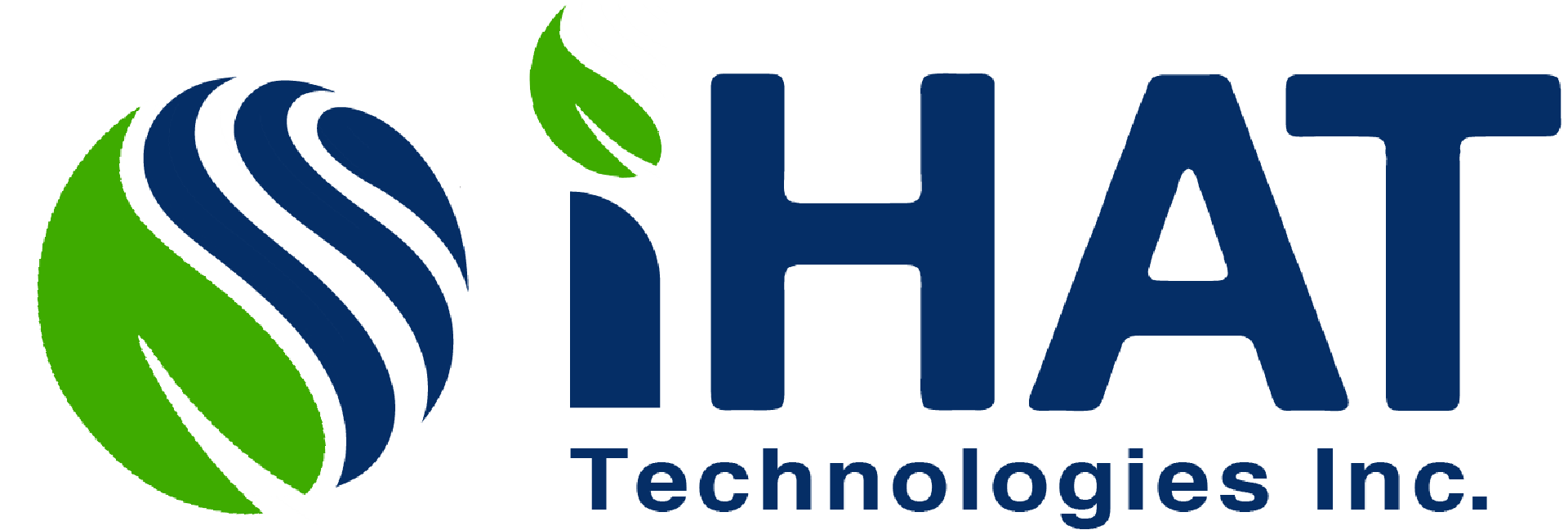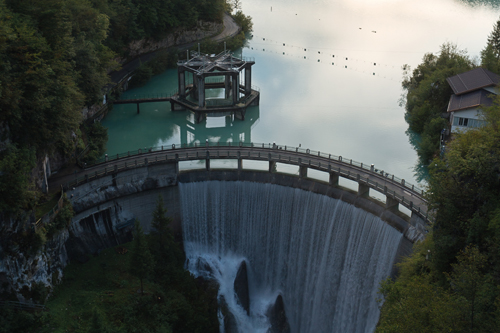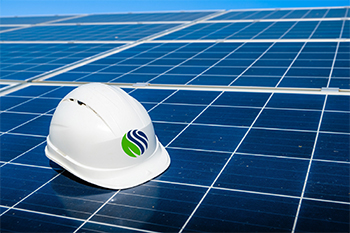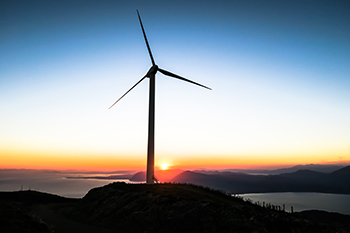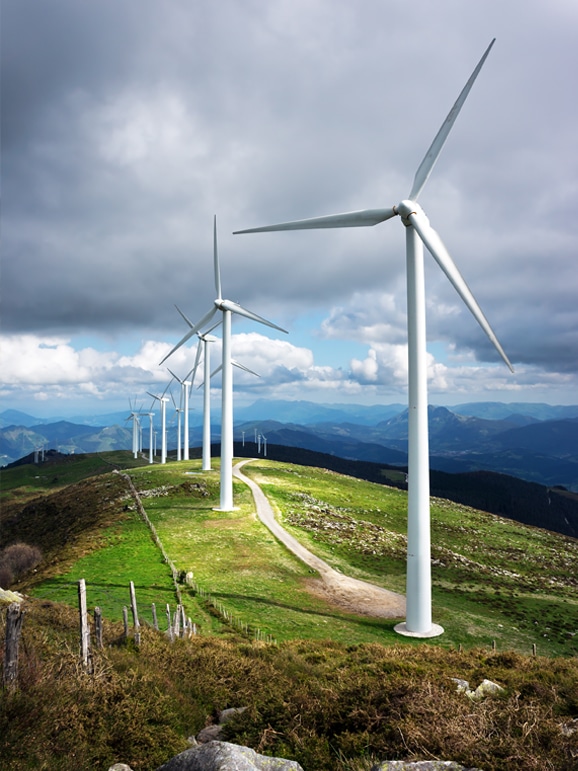
- Home
- /
- Wind Technologies
WIND TECHNOLOGIES
What are Wind Turbines and How Do They Work?
Wind is a clean, free, and readily available renewable energy source. Every day around the world, wind turbines are capturing the wind’s power and converting it to electricity. With over 35,000 wind turbines installed globally, GE is one of the world’s leading turbine suppliers.
Wind turbines allow us to harness the power of the wind and turn it into energy. When the wind blows, the turbine’s blades spin clockwise, capturing energy. This triggers the main shaft, connected to a gearbox within the nacelle, to spin.
The gearbox sends that energy to the generator, converting it to electricity. Electricity then travels down the tower to a transformer, where voltage levels are adjusted to match with the grid.
Wind power uses wind energy which is generated by the heating and cooling of the earth each day by the sun. The sun is an inexhaustible source that makes wind power renewable.
Wind power is generated when the wind is used to rotate two to three propeller-like blades around a rotor. This action spins a generator.
This unit is known as a wind turbine. In a large-scale setup, wind turbines are organized in groups that produce electricity in a wind farm.
One wind turbine can be sufficient to generate energy for a household. Because wind is a source of energy that is non-polluting and renewable, wind turbines create power without using fossil fuels, without producing greenhouse gases or radioactive or toxic waste.
Energy derived from wind may also be converted to hydrogen and used as a form of fuel for transportation or stored for subsequent power generation. Using wind energy reduces the environmental impact of generating electricity because it requires no fuel and does not produce pollution or greenhouse gases.

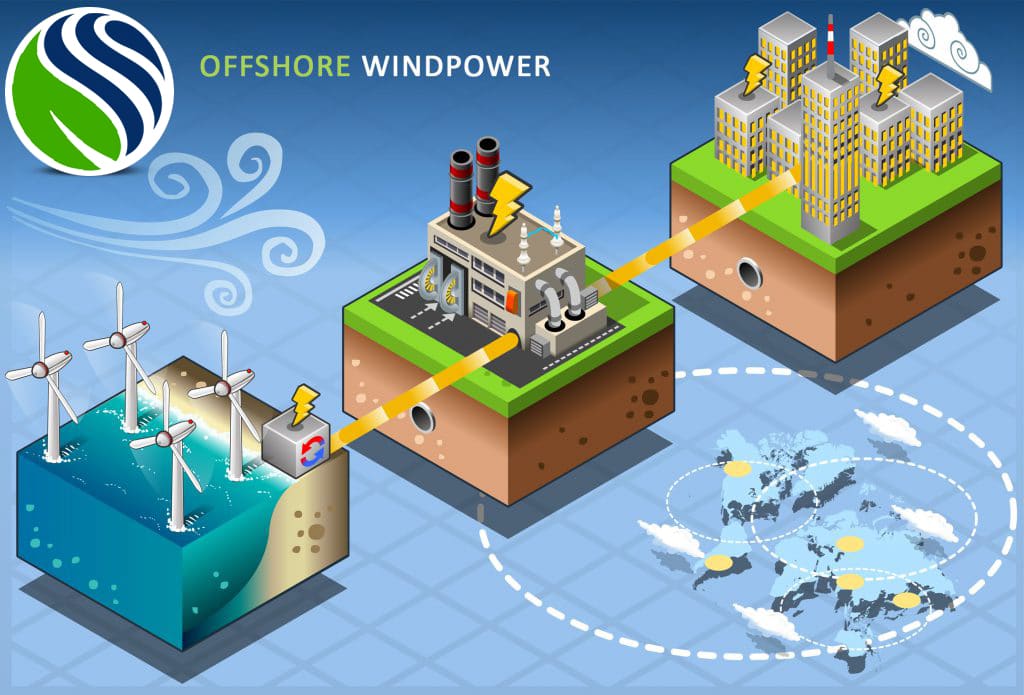

We have all followed with great interest the extraordinary breakthrough in European offshore wind over the past few years. After struggling for a number of years with increasing prices as projects moved further offshore and into deeper waters, the first real breakthrough came in early 2015 with the Horns Rev 3 project where Vattenfall’s winning bid of €103/MWh foreshadowed meeting the industry’s target of €100/MWh by 2020.
This was followed in 2016 with a number of bids in both Danish and Dutch
tenders with prices well below that, and in 2017 and 2018 resulted in a number of bids for which all that was required was the wholesale price of power.
While this is not the norm, it shows that the improvements in technology (especially larger and larger turbines) along with a well-developed supply chain, advances in installation and operation and maintenance strategies and experience (along with the very low cost of capital) has made offshore wind a competitive source of power going forward in Europe.
One of the knock-on effects of this, of course, is that now what was a slow development of what was viewed as an expensive technology has attracted a great deal of attention outside Europe, in Asia, the Americas and even Australia.
The main market outside of Europe for the past few years has, of course, being China. The Chinese offshore industry has struggled to build up a head of steam over the last 6-8 years, but now seems to be hitting its stride, installing 1,100 MW of offshore wind in 2017 for a cumulative total of nearly 2.9 GW — about 15 percent of the global market; and it seems to be on its way to hitting its latest 2020 target of 5 MW well ahead of time.
Provincial governments, especially Jiangsu, Guangdong and Fujian have now gotten involved and have set their own targets, which add up to a pipeline of about 7.5 GW by 2020. For the long term, there are about 60 GW of projects identified.
Next on the list is Taiwan, with an ambitious program set out by the government to achieve a target of 5.5 GW by 2025.
Fuelled by very generous feed-in tariffs, developers and OEMs are crowding into the market, and several small demonstration projects have been awarded. This is to follow by another roughly 3.5 GW under the feed-in tariff scheme, and then the procurement will switch to competitive bidding for the remaining 2 GW. Taiwan is set to become a key player in the region as the industry evolves.


Direct Use:
- ells drilled into a geothermal reservoir produce hot water and steam from a depth of up to 3 km
- The geothermal energy is converted at a power plant into electricity
- Hot water and steam are the carriers of the geothermal energy
- Applications that use hot water from geothermal resources directly
- Examples: space heating, crop & lumber drying, food preparation, fish farming, industrial processes etc.
- Historical traces back to ancient Roman times, e.g. for baths & spas
Geothermal Heat Pumps:
- Taking advantage of relatively constant earth temperatures as the source and sink of heat for both heating and cooling, as well as hot water provision.
- One of the most efficient heating and cooling systems available
Hot Drock/Enhanced or Engineered Geothermal System (EGS):
- Extracts heat by creating a subsurface fracture system to which water can be added through injection wells
- Water is heated by contact with the rock and is pumped back to the surface through production wells
- Energy is then converted at a power plant into electric energy as in a hydrothermal geothermal system
- While there are some projects using the technology, it cannot be considered proven (on an industrial scale).
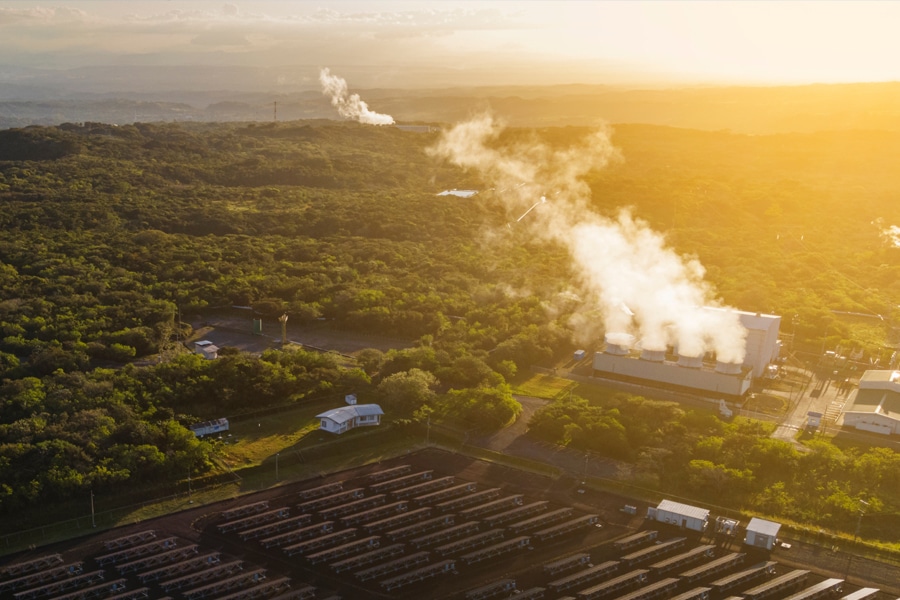
Depending on the characteristics of the geothermal resource, e.g. based on resource temperatures, electricity generation takes either place in conventional steam turbines or binary plants. The earliest plant known to have generated electricity from geothermal is an early installation at Lardarello in Tuscany, Italy in 1904.
“Conventional steam turbines require fluids at temperatures of at least 150 degrees Celsius and are available with either atmospheric (back-pressure) or condensing exhausts. Atmospheric exhaust turbines are simpler and cheaper. The steam, direct from dry-steam wells or, after separation (of water from steam), from wet wells, is passed through a turbine and exhausted to the atmosphere. With this type of unit, steam consumption per kilowatt-hour (kWh) produced is almost double that of a condensing unit.
The condensing units, having more auxiliary equipment are more complex than the atmospheric exhaust units, and the bigger sizes can take twice as long to construct and install. Condensing plants with a capacity of 55 to 60 MWe are very common, but plants of 110 MWe have also been constructed and installed.” (source: Dickson/ Fanelli, 2006)
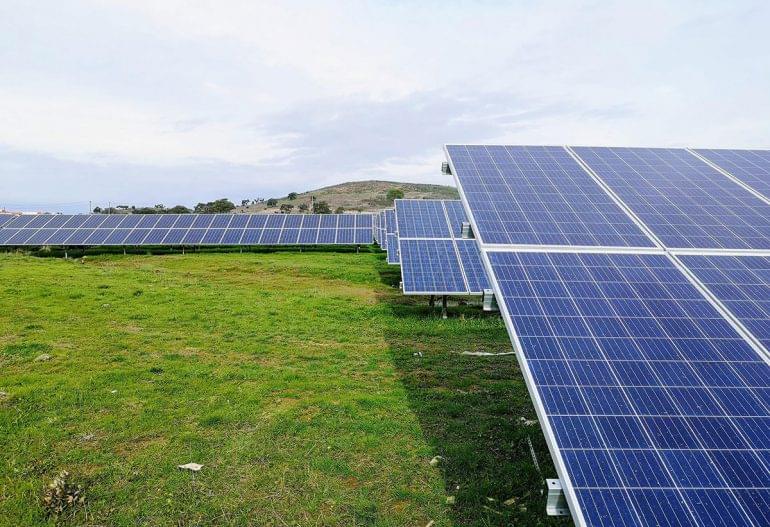
UN Organizations Launch Clean Energy Plan
Against the backdrop of a global energy crisis and worsening climate emergency, today the UN …
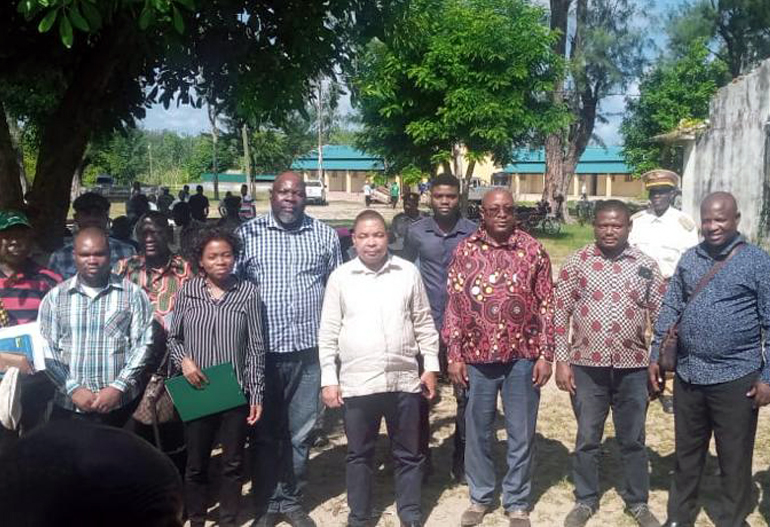
iHAT Africa Public Announcement
iHAT AFRICA intends to develop and integration project for poultry production and renewable energy generation in the town ofZalala.

Geothermal Energy Production & Utilisation
Geothermal energy can be found all over the world, how feasible its utilisation is…

‘First-of-its-kind’ study to test geothermal energy
Geothermal is a type of renewable energy taken from heat that comes from the earth’s subsurface, ..
iHAT collects and shares reliable information from various sites including , IREANA International Renewable Energy Agency →
